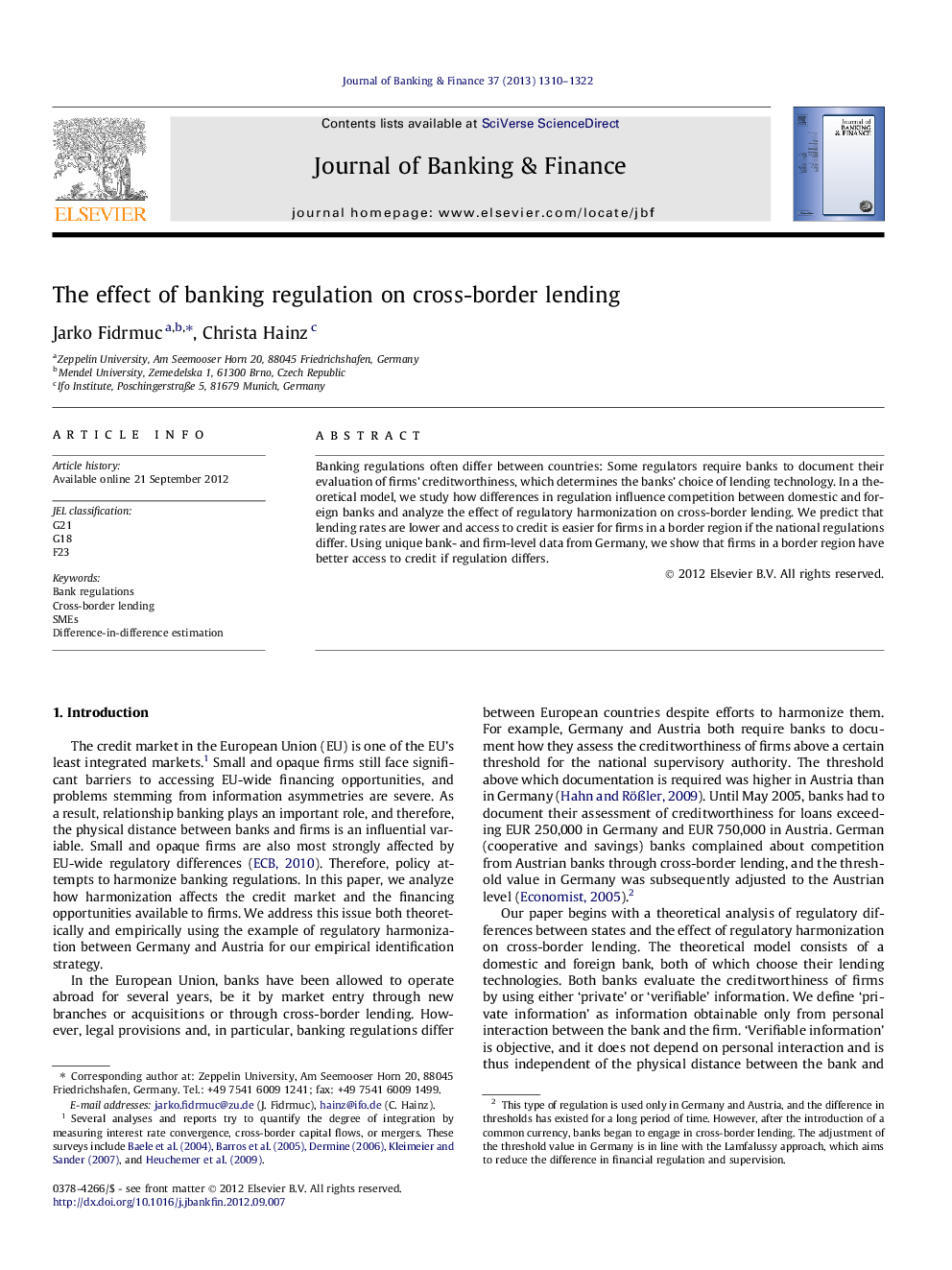| Article ID | Journal | Published Year | Pages | File Type |
|---|---|---|---|---|
| 5089435 | Journal of Banking & Finance | 2013 | 13 Pages |
Banking regulations often differ between countries: Some regulators require banks to document their evaluation of firms' creditworthiness, which determines the banks' choice of lending technology. In a theoretical model, we study how differences in regulation influence competition between domestic and foreign banks and analyze the effect of regulatory harmonization on cross-border lending. We predict that lending rates are lower and access to credit is easier for firms in a border region if the national regulations differ. Using unique bank- and firm-level data from Germany, we show that firms in a border region have better access to credit if regulation differs.
⺠We study theoretically the effect of regulatory differences on bank lending. ⺠We analyze the impact of regulatory harmonization on the cross-border lending. ⺠Firms in the border region view access to credit as easier before the harmonization. ⺠The lending rate of German banks depends on its proximity to the foreign bank.
